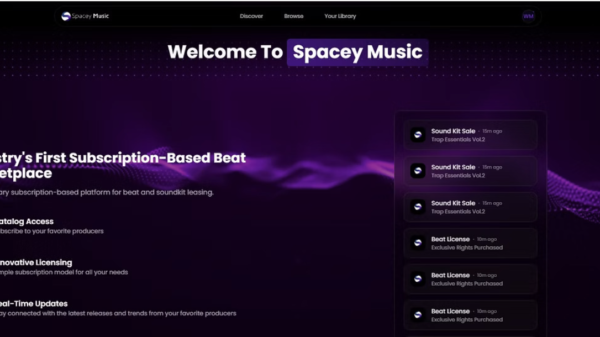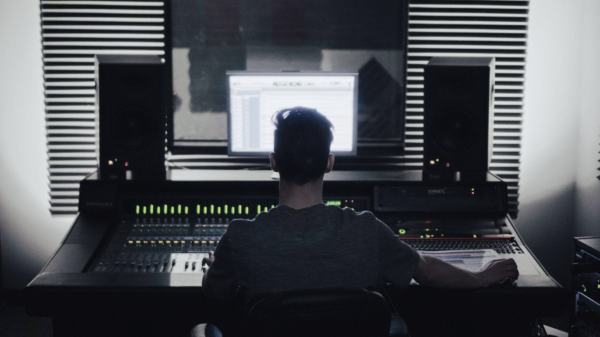Earlier this year, the Copyright Office opened a notice of inquiry (NOI) into U.S. performing rights organizations (PROs) – asking the music industry, venues and broadcasters that hold performance licenses to weigh in on whether or not they should face any new reform. Triggered by a so-called “proliferation” of new PROs in the market, and PROs alleged “lack of transparency,” it’s shaping up to be one of the most important issues facing the music publishing business this year. On Friday (April 11), the industry’s chance to submit comments came to a close. Ahead of all comments being made public, Billboard explains the origins of this inquiry and its possible implications.
How the NOI Started
On Sept. 12, 2024, Billboard broke the news that the House Judiciary Committee sent a letter to the Register of Copyrights, Shira Perlmutter, requesting the examination of “concerns” and “emerging issues” with U.S. PROs.
The House Judiciary’s note cites two key issues: the “lack of transparency” surrounding PRO distributions and how they “currently gather information from…general licensees about public performance;” and the “proliferation” of PROs in the United States. This references the fact that, with newer entrants like Global Music Rights (GMR), PRO Music Rights (PMR) and AllTrack emerging over the last decade or so, the U.S. PRO total is up to six different options — making the licensing system more complicated and expensive for licensees. In contrast, most countries only have one PRO – while a small number have two – for writers to choose from.
Perlmutter and the Copyright Office replied to the letter by opening this inquiry in early 2025.
PRO History
The U.S. PRO system dates back to 1914 with the founding of the American Society of Composers, Authors and Publishers (ASCAP), which was created to help songwriters and publishers collect their earnings from public performances. This included collecting royalties from venues, restaurants, bars, college campuses and anywhere else music is played or performed in front of other people. It also included radio broadcasters. (In later years, as technology developed, performance monies also started to be collected from TV broadcasters and music streaming services.)
In 1931, the Society of European Stage Authors and Composers (SESAC) opened as a more boutique option, largely representing works published by European firms. In 1939, broadcasters in the radio business banded together in protest of some of ASCAP’s licensing practices, which they felt were unfair, to eventually form their own competing PRO, Broadcast Music Inc. (BMI).
For many years, ASCAP and BMI acted on a not-for-profit basis (BMI changed to for-profit status in 2022) and allowed any writer to join. Their open door policies meant that the two came to represent the vast majority of songwriters in the U.S., while SESAC continued as a smaller, for-profit player that allowed sign-ups by invitation only.
Alleging ASCAP and BMI were partaking in “anticompetitive business practices,” the Department of Justice (DOJ) sued ASCAP and BMI beginning in the 1930s. By 1941, the two PROs had settled their cases and entered consent decrees with the DOJ. One of the stipulations of these consent decrees said that ASCAP and BMI were subject to oversight by a “rate court” if a licensee couldn’t reach an agreement with them on an appropriate royalty. In short, ASCAP and BMI could no longer negotiate any rate they wanted to for their songwriters, which became increasingly challenging to navigate as performance licensees expanded over the years to include major tech platforms.
Royalty rates in the music publishing sector, unlike those in the recorded music business, are often overseen by government bodies in the U.S. That includes the rate court, which steps in to set performance license rates for ASCAP and BMI when they can’t agree with licensees; and the Copyright Royalty Board, which regulates the rates for all U.S. mechanical royalties. For that reason, the publishing business is particularly sensitive to talk of any additional criticism, restriction or regulation, which is a possible result of the U.S. Copyright Office’s inquiry should Congress find it appropriate to take further action afterwards.
Why the NOI Started
From the perspective of small venues around the country that have already been squeezed by the COVID-19 pandemic, the U.S. PRO system today — including having to pay up to six different PROs for music — is seen as complicated and increasingly expensive. Sources in the live industry say one of the newcomers, GMR, also charges higher prices than its competitors for its performance license. Because it was founded in 2013, long after ASCAP and BMI’s DOJ woes, and because it positioned itself as an invite-only, for-profit PRO for elite musicians like Drake, Bruce Springsteen and Billie Eilish, GMR charges a premium.
The other two newcomers, AllTrack and PMR, are less understood by some licensees. AllTrack was founded in 2017 by former SESAC board member Hayden Bower and focuses on mid-sized and/or independent talent, hoping to provide a modernized, streamlined approach to the over 100 year old PRO system of royalty collection; while PMR was founded in 2018 by serial entrepreneur Jake Noch. PMR is perhaps best known for suing “the entire music industry,” as the PRO put it, for allegedly “running an illegal cartel for the performance rights of musical works… [and entering] into an illegal agreement, combination and/or conspiracy to shut PMR out of the market and fix prices.”
The House Judiciary Committee also expressed concern that the increasing number of PROs in the U.S. “represents an ever-present danger of infringement allegations and potential litigation risk from new and unknown sources,” as it stated in its letter to Perlmutter.
Besides frustration about how many PROs there are in today’s market, the House Judiciary flags a number of areas where transparency might require improvement. “It is difficult to assess how efficiently PROs are distributing general licensing revenue based on publicly available data,” the letter reads. “[We] request that the Office examine how the various PROs currently gather information from live music venues, music services, and other general licensees about public performance; the level of information currently provided by PROs to the public; whether any gaps or discrepancies occur in royalty distribution; what technological and business practices exist or could be developed to improve the current system; the extent to which the current distribution practices are the result of existing legal and regulatory constraints; and potential recommendations for policymakers.”
Transparency issues have been flagged a number of times over the years by stakeholders who feel PROs – in the U.S. and abroad – can be unclear about how they calculate royalties, bonuses and advances distributed to talent. Some PROs, however, would likely disagree with that characterization. ASCAP, for example, is proud of its songwriter-led board of directors, which determines how it handles distributions.
What Happens Next
The comment period ended on Friday, and soon, the responses from publishers, PROs, venues, broadcasters and more will be made public. From there, the Copyright Office will review the comments, and it will eventually write up a report with its findings. There is no timeline for this report, and it should be noted that the Copyright Office does not have the remit to make any specific changes to PROs but its findings could be influential to Congress.





























